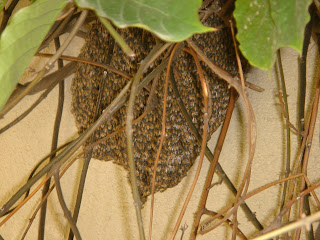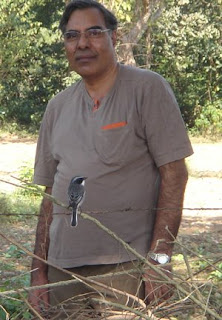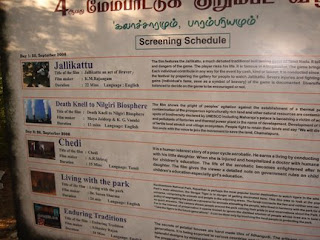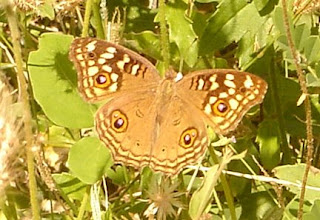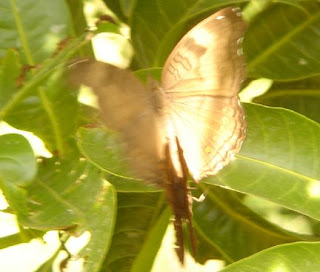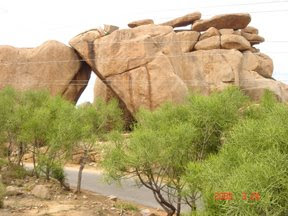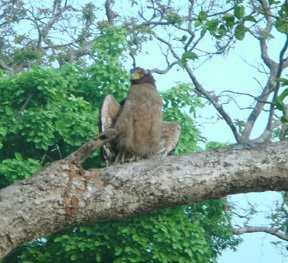
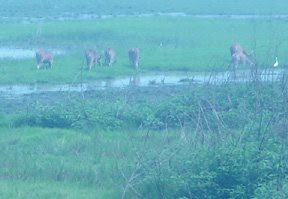
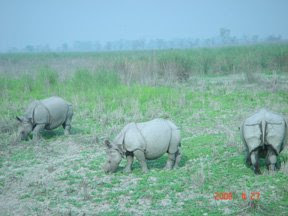
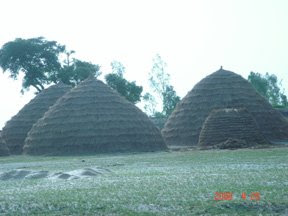

Dudhwa National Park-26-28 April, 2008
See our You Tube video here
Dudhwa National Park-An elephant safari
https://youtu.be/Zxjuy5RoSbM
Situated on the Indo-Nepal border in District Lakhimpur-Kheri of Uttar Pradesh, the Dudhwa Tiger Reserve with an area of 614 sq. Km is one of the few remaining examples of the diverse Terai region. The Terai ("moist land") is a belt of marshy grasslands, savannas, and forests at the base of the Himalaya range in India, Nepal, and Bhutan. The northern edge of the reserve lies along the Indo-Nepal border and the river Suheli marks the southern boundary. It is home to a large number of rare and endangered species which includes Tiger, Leopard, Swamp deer, Hispid hare, Bengal Florican, etc.
The grasslands of the reserve are the habitat of the largest kind of Indian deer-the Swamp deer or the Barasingha, so called because of their magnificent antlers (bara-twelve;singha-antler). Decline in their habitats led to a drastic decline in numbers and a small area named Sonaripur Sanctuary was set aside in 1958 for the conservation of this rare species of deer. Later, it was upgraded to cover an area of 212 sq. km and was renamed the Dudhwa Sanctuary. In 1977, the area was further extended to include over 614 sq. km and was declared a National Park. Eleven years later, in 1988, when Dudhwa became a part of Project Tiger, the area of the Kishanpur Sanctuary was added to create the Dudhwa Tiger Reserve.
It was the time of wheat harvesting and one could see neatly stacked wheat stalks at several places enroute to Dudhwa via Bareilly from Delhi. We had been told the journey to Dudhwa would be about nine hours. and also that we can expect narrow roads for about 50 km or so. But the roads we encountered came out to be really bad both on the way up via Shahjehanpur and the way down, when we came via Pilibhit. Fourteen hours by car to a Tiger Reserve one had heard little about!
Once we entered the reserve the roads were well maintained and the first surprise was a meter gauge railway right into the forest, in fact right into the core area as we observed later. Villagers we met at a tea stall were excited that the track had been approved for conversion into broad gauge.
We had booked our stay in Forest Rest Houses inside the reserve. The place was well lit with CFL bulbs running entirely on solar cells. Even the adjoining staff quarters had solar power.
Early next day we were told that two of the elephants allotted for safari had been requisitioned by Forest Dept for “operation man-eater leopard”. The leopards in Dudhwa lift cattle and turn man- eaters often. Compared to 77 tigers in the Reserve, the leopard numbers were only ten.
We are allowed to explore the forest in our own vehicle and that is what we did. Smoldering ash from a recent forest fire greeted us first. Soon we glimpsed chital and swamp deer and tiger pugmarks.
We also managed an elephant ride into the 20 sq. km rhino enclosure . The rhinos seemed placid , chewing on elephant grass, which came to life with jumping hog deer as we maneuvered our way.
The jeep ride into the forest in the evening proved exciting- Herds of swamp deer could be seen from the machan. The deer had shed their antlers, which were sprouting again for the next mating season display. The pugmarks of an adult tigress and four cubs seemed very recent and we followed them. Sure enough the huge tigress (again visible at a distance from the machan) surprised a herd of sitting swamp deer into sudden action. Calls by langur and deer filled the forest air. The whistle of a train came from the distance and a speeding train could be seen in the horizon view from the machan. The Gonda-Bareilly railway line passes through the National Park. Animals in this reserve must be quite used to this noise by now. One tiger and two elephants died in the tracks recently, Sonu, our guide informed. Ten trains run through the reserve in one day and every now and then we encountered people collecting fodder and dried wood in the forest. The train station located right inside the reserve carried people in and out regularly making a mockery of National Park rules.
Tigers and people are living on the edge in this Tiger Reserve, which obviously had a very good prey base. Herds of hog deer and a few barking deer and chital greeted us on the jeep route. Wild hog, another favorite of the tiger also showed themselves often. Swamp deer herds, which kept near water bodies, avoided tourist routes, but were obviously thriving as well.
Swamp deer in Dudhwa.
The guide pointed out to a distant herd of wild elephants, they are our guests, he said. “They have come from Kosi Tappu wildlife reserve of Nepal”.
A large partridge scampered away. Could it be the swamp partridge? Our guide for the day was not very sure. A serpent eagle displayed itself on a large tree. The cry of the brown headed fishing eagle made us reach for the binoculars. Bird life in the forest is good though not as plentiful as in Corbett Reserve.
I almost forgot to mention the wildlife spotted near our dwelling. As I was opening the locked room of the forest hut, a sound of something falling behind me made me look back. A pit vper had just decided to drop down from the roof of the verandah. As I moved away, it started hurtling towards me. Soon, the hot floor made it difficult for it to move. The canteen boys came, swirled it around a stick a few times and then dropped it across the wall of the adjoining forest. What if someone gets bitten, ( vipers seldom bite though) I asked. The local Hakim has herbal medicines for the bite and they work, he said. According to him, no one he knew died of the bite.
I read in an article in the BNHS magazine that the violet spikes of Pogostemon bengalensis, seen in the forests around, is the only confirmed herbal antidote for the venom of the viper. Thank God I did not have to try it!
The Reserve is dotted all around with anthills- a sure sign that sloth bear are likely to be around. Though we came across footprints and scat often, the bear himself proved elusive.
The Park did not have too many visitors as many of the forest guest houses were under renovation. A tree house with a good view of “Tiger Tal” is complete and is sure to be a hit with tourists. On the whole, a Park with huge tourist potential, if managed right.



